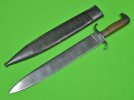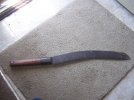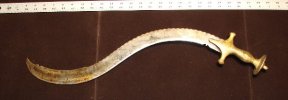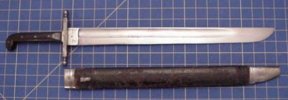- Joined
- Mar 17, 2013
- Messages
- 2,078
A knife is a knife. A knife is seen not as a weapon so to speak but a tool or instrument to complete a cutting task. Once you move beyond that there are soooo many verbages involving edged weapons that it is really just a matter of opinion in some cases. At what point does a dagger become a dirk or a short sword or a hand and a half sword, etc, etc.
Essentially if you move beyond the definition of a knife you have a weapon, and, sometimes a knife can be designed/shaped to resemble or be a weapon. Basically, to me, it is all a matter of intended purpose. If you are in a wheat field with a scythe it is a tool, walking around the mall...
Essentially if you move beyond the definition of a knife you have a weapon, and, sometimes a knife can be designed/shaped to resemble or be a weapon. Basically, to me, it is all a matter of intended purpose. If you are in a wheat field with a scythe it is a tool, walking around the mall...





